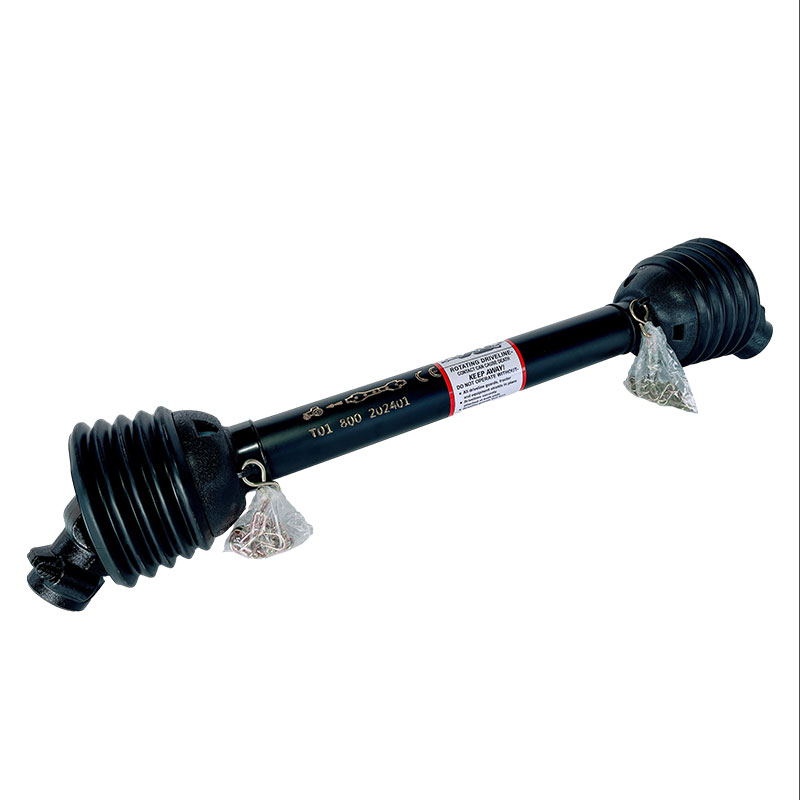What Is the Importance of the Power Train Axle in Modern Vehicles?
2025-01-09
When it comes to vehicle performance, most people focus on the engine, transmission, or tires. However, one of the most crucial yet often overlooked components is the power train axle. But what exactly is the power train axle, and why is it so important for the operation of modern vehicles? In this blog, we’ll dive deep into the role of the power train axle, how it works, and why it's essential for efficient vehicle performance.
What Is a Power Train Axle?
In simple terms, the power train axle refers to the mechanical component that connects the engine and transmission to the wheels, transmitting power and torque from the engine to the wheels to drive the vehicle forward. It's a critical part of the drivetrain, the system responsible for transferring power from the engine to the wheels.
The power train axle typically consists of:
1. Axle shafts: These transfer the power from the differential to the wheels.
2. Differential: This allows the wheels to rotate at different speeds while maintaining power transfer.
3. Bearings and gears: These support and help transfer motion smoothly and efficiently.
Power train axles are found in both front-wheel drive (FWD) and rear-wheel drive (RWD) vehicles, and their design can vary depending on the vehicle type, such as in all-wheel drive (AWD) or four-wheel drive (4WD) systems.
Why Is the Power Train Axle So Important?
1. Essential for Power Transmission
The most important function of the power train axle is to transmit power from the engine to the wheels. Without it, the vehicle would have no means of moving. When the engine produces power, it is transferred to the transmission, which then passes it on to the power train axle. The axle’s role is to carry that power all the way to the wheels, enabling them to turn and drive the vehicle.
2. Handles Torque and Vehicle Load
Power train axles are designed to handle significant torque and heavy loads. As the engine generates power, it creates torque, which the axle needs to efficiently distribute to the wheels without compromising performance. In high-performance vehicles or heavy-duty trucks, the axle has to withstand intense stress and pressure while ensuring smooth power transfer to the wheels.
For example, in trucks that carry heavy loads or vehicles designed for off-roading, the axle plays a key role in ensuring that the vehicle remains stable and efficient despite the added strain.
3. Supports Vehicle Stability and Handling
The power train axle plays a significant role in maintaining vehicle stability and handling. A properly functioning axle ensures that the wheels rotate at the correct speed, improving traction and overall control of the vehicle. In vehicles with differentials, the axle allows the wheels on either side to rotate at different speeds, ensuring that the vehicle maintains proper handling through turns and corners.
This feature is particularly important for vehicles used in challenging terrains, where uneven surfaces or sharp turns require extra stability and precision.
4. Enables Smooth Driving Experience
The axle’s ability to distribute torque efficiently is key to providing a smooth and enjoyable driving experience. If the power train axle fails or wears out, it can cause irregularities in wheel movement, such as vibrations, grinding noises, or difficulty in steering, leading to a rough ride. A well-maintained axle ensures that power is transferred seamlessly, resulting in smooth acceleration, deceleration, and overall operation.
5. Differential Functionality
One of the most important functions of the power train axle is its integration with the differential. The differential allows the left and right wheels on the axle to rotate at different speeds. This is especially important when turning, as the outer wheels travel a longer distance than the inner wheels. Without a differential, the wheels would be forced to rotate at the same speed, which could lead to tire wear, poor handling, and even damage to the axle or drivetrain.
In all-wheel-drive (AWD) and four-wheel-drive (4WD) systems, the axle and differential work together to ensure power is distributed to all four wheels, improving traction and stability, especially in adverse driving conditions like snow, mud, or off-road terrain.
6. Efficiency and Fuel Economy
A properly functioning power train axle can also have an impact on fuel efficiency. If the axle is worn or damaged, it can create friction and reduce the efficiency of the power transfer, meaning the engine has to work harder to move the vehicle. This additional strain can result in reduced fuel economy. Regular maintenance and timely repairs of the power train axle can help maintain optimal fuel efficiency, reducing overall operating costs.
7. Durability and Maintenance
As one of the more durable parts of the vehicle, the power train axle can last for many years if properly maintained. However, like any component, it requires attention. Over time, axles can wear down due to constant stress and exposure to harsh conditions. Regular inspection of the axle and its components, such as the bearings and seals, is essential to ensure it continues to perform at its best.
Signs that an axle may be in need of repair include unusual noises (like grinding or clunking), vibrations while driving, or difficulty steering. If left unchecked, axle problems can lead to more significant damage to the drivetrain or wheels, which could result in costly repairs or even a total breakdown.
How Does the Power Train Axle Differ in Various Vehicles?
1. Front-Wheel Drive (FWD)
In FWD vehicles, the engine and transmission are located at the front of the vehicle, and the power is sent directly to the front wheels. The axle is located at the front and typically consists of half-shafts, which deliver power to the wheels. FWD vehicles are known for their fuel efficiency and better traction in slippery conditions, as the weight of the engine is over the front wheels.
2. Rear-Wheel Drive (RWD)
In RWD vehicles, the engine is located at the front, but the power is transferred to the rear wheels. The axle at the rear consists of a more robust setup, often with a differential and drive shafts that transmit the power from the engine to the rear wheels. RWD vehicles are often found in performance cars, trucks, and SUVs, as they tend to offer better handling and acceleration.
3. All-Wheel Drive (AWD) and Four-Wheel Drive (4WD)
AWD and 4WD systems use a more complex axle system, with power being distributed to all four wheels. These systems are designed for better traction and handling, especially on difficult terrains. The axles in these vehicles are often reinforced and built to handle higher torque loads, ensuring that all wheels receive power for maximum control and stability.
Conclusion: What Makes the Power Train Axle So Important?
The power train axle is undoubtedly one of the most vital components in any vehicle, providing the essential function of transmitting power from the engine to the wheels. From handling torque and vehicle load to ensuring smooth driving experiences and enabling stability in challenging conditions, the axle is integral to both performance and safety.



